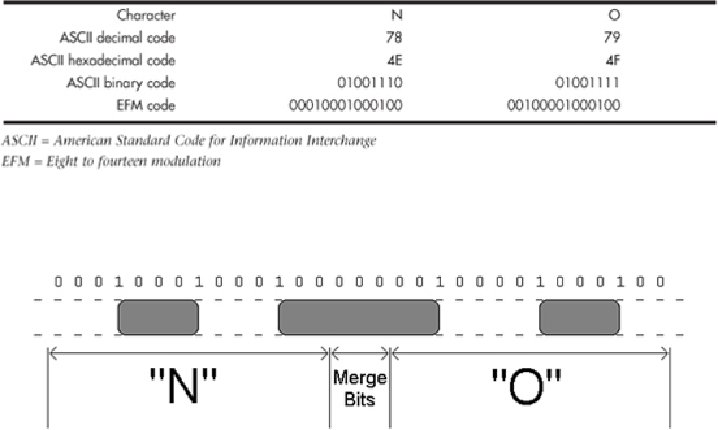Hardware Reference
In-Depth Information
Figure 11.5
shows how the encoded data would actually appear as pits and lands stamped
into a CD.
Figure 11.5
EFM data physically represented as pits and lands on a CD.
The edges of the pits are translated into the binary 1 bits. As you can see, each 14-bit
grouping represents a byte of actual EFM-encoded data on the disc, and each 14-bit EFM
code is separated by three merge bits (all 0s in this example). The three pits produced by
this example are 4T (4 transitions), 8T, and 4T long. The string of 1s and 0s on the top of
the figure represents how the actual data would be read; note that a 1 is read wherever a
pit-to-land transition occurs. It is interesting to note that this drawing is actually to scale,
meaning the pits (raised bumps) would be about that long and wide relative to each other.
If you could use a microscope to view the disc, this is what the word “NO” would look
like as actually recorded.
Writable CDs
Optical disc recording has come a long way since 1988, when the first CD-R recording
system was introduced at the cost of $50,000 (back then, they used a $35,000 Yamaha au-
diorecordingdrivealongwiththousandsofdollarsofadditionalerrorcorrectionandother
circuitry for CD-ROM use), operated at 1x speed only, and was part of a subsystem that
wasthesizeofawashingmachine!Theblankdiscsalsocostabout$100each—compared
to less than 5 cents each in bulk cakebox form. (You provide your own jewel or slimline
cases.) Originally, the main purpose for CD recording was to produce prototype CDs that
could then be replicated via the standard stamping process.

